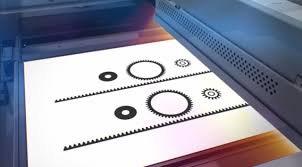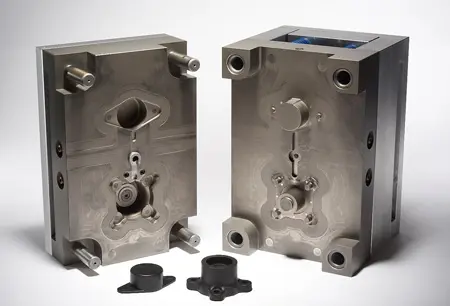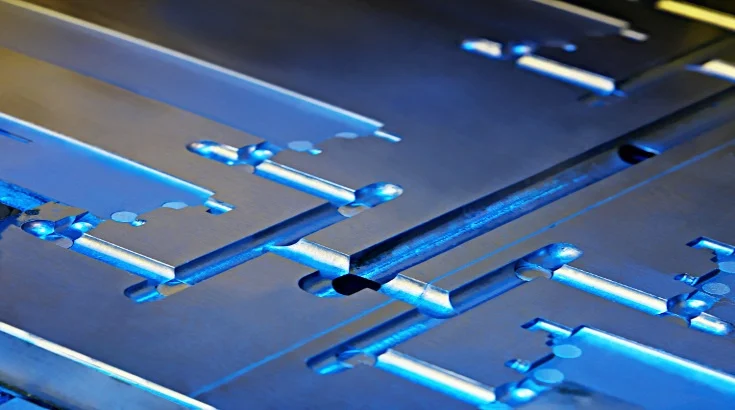3D Printing vs. Injection Moulding: Which to Choose?
- cvanhoogevest
- May 15, 2023
- 4 min read
Updated: May 17, 2023
Injection moulding and 3D printing are the two most commonly used methods for manufacturing plastic parts, but it can be hard to decide which is most suitable for your project. Each manufacturing process has its own advantages and can be used together as complementary manufacturing methods. This guide compares the optimal uses of each.
How do 3D printing and injection moulding work?
3D printing
3D printing, or additive manufacturing, is a process of making three-dimensional solid objects from a digital file. Essentially it prints by adding material one layer at a time, from the bottom up. Additive manufacturing can produce shapes and parts that are either difficult or even impossible to create using other fabrication methods, and an increasing variety of materials are available for use with this manufacturing process.
Injection moulding
Injection moulding uses moulds to manufacture parts. First, a mould is made of a temperature-resistant material in a reverse image of the part being produced. Once the mould has been manufactured, plastic is injected into the mould and allowed to cool, to produce the final part. With this process, multiple parts can be manufactured at once.
How do 3D printing and injection moulding compare?
Production volume

The volume of the production run is a major deciding factor when deciding whether to use 3D printing or injection moulding. For high-volume production of identical parts (1000+) injection molding is the most effective and affordable. For low volumes (10-100+), 3D printing is more cost-effective. For mid-volume production, other factors including design complexity, turnaround time and customization must be taken into consideration.
Design complexity

There are many factors which need to be considered when designing for injection moulding, as the part must be able to be removed from the mould when it is complete. A complex design must be moulded in many pieces and subsequently fit together, and delicate areas must be treated with care. Generally, more complex designs are more expensive. With 3D printing, the parts are built layer-by-layer, which gives the designer a great amount of freedom when designing the part. A complex part is as easy and affordable to 3D print as a simple design.
Production time

Injection moulding has a long lead time because a mould must be designed and built for the part being manufactured. It generally takes 10-20 days to design and build the mould before the parts can be produced.
With 3D printing, the CAD file is simply uploaded to the printer and is ready to build, with delivery times as low as 24 hours.
Customization

When injection moulding, a new mould must be built each time the design is changed. This can cost anywhere from ~$100 for a 3D-printed low-volume injection mould to $100,000+ for a complex steel mould for mass production. This makes design changes very expensive and time-consuming.
With 3D printing, all modifications are made with 3D modelling software. The CAD file can be sent directly to the 3D printer to be manufactured, making modifications or custom designs very quick and easy to produce. This makes 3D printing very useful for applications such as designing and testing prototypes, creating customized consumer goods, and creating medical devices formed to the human body.
Material strength
The injection moulding process creates parts in one single piece, making it strong across all dimensions. With 3D printing the parts are built layer by layer, making the final part weaker along the layer lines.
More recently developed 3D printing processes have minimized these weaker layers, and provide strength close to injection moulded parts. Parts requiring strength in a certain direction can be oriented in the print bed to provide strength in the desired direction, as shown in this video where a 3D-printed chain link is used to lift a car.
Surface finish

Injection moulded parts have a wider variety of finish options than 3D-printed parts. Injection moulded parts often undergo additional surface finishing to hide imperfections such as the flow lines, knit lines, sink marks and shadow marks that are a result of injection moulding.
3D printed parts can have a textured surface finish integrated into the design, but the finished part can show slight layer lines. These lines can be minimized if the part is oriented properly in the print bed. An additional step of post-processing is often used to smooth the parts to improve aesthetics or material properties.
3D printing and injection moulding in the manufacturing cycle
Often 3D printing and injection moulding are both used in the product development and manufacturing cycle. A product can be designed and tested with 3D printed prototypes, and initial production runs can be manufactured with 3D printing until the production volume is high enough to justify the expense of injection moulding. In this case, the part can be designed for the injection moulding process so the transition between the two manufacturing processes is seamless. 3D printing is again used in the end-stage lifecycle of a product to create legacy parts for older or discontinued equipment. 3D printing can also be used to create moulds for injection moulding, or create unique parts such as jigs and fixtures.
Summary
3D printing is best for... | Injection moulding is best for... |
Quick delivery | Relatively simple designs |
Complex designs | Greater variety of surface finishes |
Frequent design changes | Parts with isometric strength |
Low-volume manfuacturing | High-volume manufacturing |
Conclusion
Both injection moulding and 3D printing serve different and complementary purposes in manufacturing. When choosing which one to use, it is important to consider which factors are most important, including cost, production volume, delivery time, material properties and your stage in the design and manufacturing process.
Interested in 3D printing as a manufacturing option? Tempus 3D specializes in manufacturing industrial-grade plastics at competitive prices for the Canadian market. Request a quote today! |







